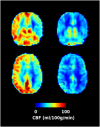Update on Hemodialysis-Induced Multiorgan Ischemia: Brains and Beyond
- PMID: 38273436
- PMCID: PMC11149050
- DOI: 10.1681/ASN.0000000000000299
Update on Hemodialysis-Induced Multiorgan Ischemia: Brains and Beyond
Abstract
Hemodialysis is a life-saving treatment for patients with kidney failure. However, patients requiring hemodialysis have a 10-20 times higher risk of cardiovascular morbidity and mortality than that of the general population. Patients encounter complications such as episodic intradialytic hypotension, abnormal perfusion to critical organs (heart, brain, liver, and kidney), and damage to vulnerable vascular beds. Recurrent conventional hemodialysis exposes patients to multiple episodes of circulatory stress, exacerbating and being aggravated by microvascular endothelial dysfunction. This promulgates progressive injury that leads to irreversible multiorgan injury and the well-documented higher incidence of cardiovascular disease and premature death. This review aims to examine the underlying pathophysiology of hemodialysis-related vascular injury and consider a range of therapeutic approaches to improving outcomes set within this evolved rubric..
Trial registration: ClinicalTrials.gov NCT05965934 NCT04603014 NCT04877041.
Copyright © 2024 by the American Society of Nephrology.
Conflict of interest statement
C.W. McIntyre reports consultancy for Baxter, Intellomed, Sequana Medical, Spiden AG, and Vascular Dynamics; research funding from Baxter and Sequana; honoraria from Baxter; and advisory or leadership role for Baxter, Sequana Medical, and Spiden AG.
Figures



References
-
- Sarnak MJ, Levey AS. Epidemiology of cardiac disease in dialysis patients. Semin Dial. 1999;12(2):69–76. doi:10.1046/j.1525-139x.1999.00006.x - DOI
Publication types
MeSH terms
Associated data
LinkOut - more resources
Full Text Sources
Medical

